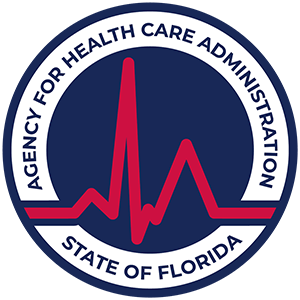How to Address Alcohol & Underage Drinking: 5 Effective Ways
Explore how to address alcohol & underage drinking with effective school and community-based strategies.
Addressing Underage Drinking
Underage drinking is a global issue that requires immediate attention and effective strategies for its prevention. Understanding the legal regulations related to alcohol consumption and the impact of alcohol marketing on young people is important when addressing this issue.
Legal Drinking Age Regulations
The legal drinking age is the minimum age at which a person can legally consume alcoholic beverages. Most countries have set the minimum legal drinking age at 18, while some have different age limits for different types of alcoholic drinks. For example, the United States has set the minimum legal purchasing age at 21 to reduce drunk driving rates among teenagers and young adults.

In 2019, the Ethiopian parliament passed a bill that raises the age limit for purchasing alcohol from 18 to 21 years. This move was intended to curb underage drinking.
These regulations are a significant step in addressing underage drinking, but they must be combined with other strategies for more effective outcomes.
Impact of Alcohol Marketing
Alcohol marketing plays a significant role in influencing underage drinking. Companies aim to capture new users before they become loyal to another brand, and in doing so, their marketing campaigns often appeal to the underage segment. This has raised concerns about the contribution of alcohol marketing to underage problem drinking [2].
A study found that exposure to alcohol marketing is linked to the brands consumed by underage drinkers. The top brands delivering alcohol messaging to underage drinkers included Sam Adams, Absolute, Bud Light, Stella Artois, Dos Equis, and Heineken. The association between exposure to a specific alcohol brand advertisement and consumption of that brand was significant, even after controlling for confounding variables. The adjusted odds ratio was 3, suggesting a strong influence of alcohol advertising on brand consumption [2].
These findings underline the importance of regulating alcohol marketing and developing strategies to counteract its impact on underage drinking.
Strategies for Prevention
When it comes to addressing alcohol and underage drinking, prevention strategies play a critical role. These strategies encompass community-based efforts, parental influence, and school-based programs, all of which contribute to creating an environment that discourages underage drinking and promotes healthier choices.
Community-Based Efforts
Community-based efforts offer potential for achieving population-level reductions in alcohol misuse among youth and young adults. These efforts rely on local coalitions to select and implement preventive interventions that have been shown to be effective in changing factors influencing the risk of youth engaging in alcohol use.
Prevention efforts aimed at reducing rates of alcohol use focus on minimizing the target population's exposure to harmful risk factors and enhancing protective/promotive factors. This is particularly crucial among youth, as early onset of drinking is linked to an increased likelihood of alcohol dependence later in life [3].
Successful community-based prevention approaches rely on local coalitions to select effective preventive interventions and implement them with fidelity. Including a universal, school-based drug prevention curriculum is associated with reductions in alcohol use among middle- and high-school students [3].
Parental Influence
Parents play a crucial role in preventing underage drinking. They can set clear expectations about alcohol use, maintain open lines of communication, and model responsible behavior. Parental monitoring can significantly reduce adolescents' likelihood of drinking. Parents should also be aware of their children's activities and peer groups, as peer pressure can significantly influence alcohol use among teens.
School-Based Programs
School-based alcohol prevention programs primarily target middle-school students, as rates of drinking initiation peak between ages 13 and 14, with more than 50% of adolescents reporting having consumed alcohol by that age [4].
Effective school-based alcohol prevention programs should be:
- Theory-driven
- Address social norms around alcohol use
- Build personal and social skills to resist alcohol pressure
- Involve interactive teaching approaches
- Use peer leaders
- Integrate other segments of the population
- Be delivered over several sessions and years
- Provide training and support to facilitators
- Be culturally and developmentally appropriate (NCBI)
By implementing these strategies, communities can make significant strides in addressing the issue of alcohol and underage drinking.
Effective School-Based Interventions
School-based interventions are a powerful approach to address alcohol and underage drinking. These programs facilitate learning and encourage students to make informed decisions about alcohol use. Effective strategies often include theory-driven approaches and interactive teaching methods.
Theory-Driven Approaches
Theory-driven approaches to alcohol prevention in schools place a vital emphasis on addressing social norms around alcohol use, promoting personal and social skills to resist alcohol pressure, and delivering culturally and developmentally appropriate content.
These programs are usually delivered over several sessions and years, providing continuous support to students as they navigate through different stages of adolescence. Facilitators are often provided with training and support to ensure the effectiveness of the intervention.
Examples of evidence-based, school-based alcohol prevention programs include Project Toward No Drug Abuse for high-school students and Project Northland, which has shown success with high-school students. Other programs like Promoting Alternative Thinking Strategies, Life Skills Training, and Project Alert have mixed or emerging evidence of effectiveness.
However, additional research is needed to develop and test interventions for elementary-school and high-school settings, as well as for special populations, including culturally specific programming.
Interactive Teaching Methods
Interactive teaching methods are another key component of effective school-based interventions. These methods engage students in the learning process, fostering a deeper understanding of the impacts of alcohol use.
Research indicates that school-based programs, such as Life Skills Training, Project Northland, the Midwestern Prevention Project, Project SMART, and Project ALERT, have been successful in reducing alcohol, tobacco, and other drug use among youth. These programs often focus on critical components like interactive curricula, interpersonal skills development, and system-wide change. Interactive curricula have been found to be more effective than noninteractive curricula in preventing alcohol, tobacco, and other drug use among youth.
While these programs primarily target middle-school students - as rates of drinking initiation peak between ages 13 and 14, with more than 50% of adolescents reporting having consumed alcohol by that age - programs for elementary schools (grades 3 to 5) and high schools are less common but equally necessary.
School-based interventions, when implemented effectively, can play a pivotal role in addressing underage drinking. By promoting responsible decision-making and providing students with the skills to resist peer pressure, schools can contribute significantly to preventing underage alcohol use.
Community-Based Prevention
Community-based prevention efforts are a central strategy in addressing alcohol and underage drinking. These initiatives focus on environmental risk factors and conduct community trials to ascertain the effectiveness of their interventions.
Environmental Risk Factors
When dealing with the issue of alcohol and underage drinking, it's important to consider environmental risk factors. These involve changes in local laws, norms, and policies related to alcohol access and use. Community-based strategies targeting these factors have proven effective in reducing alcohol use among adolescents, especially when combined with effective school curricula.
Efforts aimed at reducing rates of alcohol use focus on minimizing the target population's exposure to these harmful risk factors and enhancing protective/promotive factors. This is particularly crucial among youth, as early onset of drinking is linked to an increased likelihood of alcohol dependence later in life [3].
Community Trials
Community trials are a crucial aspect of community-based prevention efforts. They involve the selection and implementation of preventive interventions that have been shown to be effective in changing factors influencing the risk of youth engaging in alcohol use.
Successful community-based prevention approaches rely on local coalitions to select effective preventive interventions and implement them with fidelity. The inclusion of a universal, school-based drug prevention curriculum is associated with reductions in alcohol use among middle- and high-school students [3].
One notable example of a community trial is the Communities That Care (CTC) model. This model involves proactive training and technical assistance to community coalitions. It has been found to significantly reduce alcohol and tobacco use as well as delinquent behavior communitywide among youth, demonstrating the potential of community-based efforts in preventing substance use.
In conclusion, community-based prevention is a powerful tool in the fight against alcohol and underage drinking. By addressing environmental risk factors and conducting community trials, these efforts can contribute to significant reductions in alcohol misuse among youth and young adults.
Global Perspectives on Drinking Age
Addressing the global issue of underage drinking requires a comprehensive understanding of the various drinking age regulations worldwide and the regional variations in alcohol consumption.
Drinking Age Regulations Worldwide
The legal drinking age is the minimum age at which a person can legally consume alcoholic beverages. In most countries, this age is 18, however, some countries have different age limits for various types of alcohol drinks. For instance, in the United States, the minimum legal purchasing age is 21 to reduce drunk driving rates among teenagers and young adults [1].
In Australia, the legal drinking age is 18, and there are strict regulations to prevent alcohol sales to intoxicated individuals and to limit blood alcohol content while driving. The country designates many areas as "dry" or "alcohol-free" [6].
In Canada, the drinking age varies by province, with most provinces setting the minimum age at 19. However, Alberta, Manitoba, and Quebec allow individuals to drink at 18.
Japan has the second-highest drinking age globally, with individuals required to be at least 20 years old to purchase and consume alcohol.
Regional Variations in Alcohol Consumption
Regional variations in alcohol consumption are influenced by a variety of factors, including cultural norms, economic development, and local regulations. For instance, the United States has one of the highest legal drinking ages at 21 years old, while many other countries have lower drinking ages, and some have no minimum age for alcohol consumption.
In countries under strict Muslim rule, alcohol consumption is entirely prohibited. Conversely, some countries allow public drinking and even have vending machines selling alcoholic beverages, such as Japan. Such practices pose challenges for controlling underage drinking.
Understanding these global perspectives on drinking age and regional variations in alcohol consumption can provide valuable insights into how to address alcohol & underage drinking effectively. By learning from the practices of other countries, communities can develop more effective strategies and policies to prevent underage drinking and promote healthier behaviors.
Challenges and Enforcement
Addressing the issue of alcohol and underage drinking can be arduous due to a multitude of factors such as the influence of personal, social, and environmental elements. Moreover, the enforcement of regulations and measures to curb this problem also poses its own set of challenges.
Underage Drinking Statistics
Statistical data brings to light the extent of the underage drinking problem. As per the NIAAA, approximately 23.1% of adolescents report drinking by 8th grade, and about 36.7% report being drunk at least once by 12th grade. Early onset of drinking, before age 15, is associated with subsequent alcohol abuse and related problems in later adolescence, including alcohol-related violence, injuries, drinking and driving, absenteeism from school or work, and increased risk for using other drugs. Those who start drinking before age 15 are 4 times more likely to develop alcohol dependence during their lifetime than those who begin at age 21.
Regulation and Enforcement Measures
The enforcement of laws and regulations to tackle underage drinking is crucial in mitigating its prevalence. Parental influence plays a significant role in this aspect. Research indicates that around 80% of teens feel that parents should have a say in whether they drink alcohol. Adolescents who are aware that their parents would be upset with them if they drank are less likely to do so.
In addition to parental regulations, social and environmental factors also have significant influence. These include aspects like family bonds, peer alcohol use, perceived approval of alcohol use, and availability of alcohol. These factors need to be addressed systematically to ensure effective prevention of underage drinking [5].
In conclusion, the battle against underage drinking involves a comprehensive approach that includes effective enforcement measures, parental involvement, and addressing influential social and environmental factors. Understanding the challenges in this field can pave the way for more effective strategies to address alcohol and underage drinking.
References
[1]: https://en.wikipedia.org/wiki/Legaldrinkingage
[2]: https://www.ncbi.nlm.nih.gov/pmc/articles/PMC4568940/
[3]: https://www.ncbi.nlm.nih.gov/pmc/articles/PMC3860564/
[4]: https://www.ncbi.nlm.nih.gov/pmc/articles/PMC3860568/
[5]: https://www.ncbi.nlm.nih.gov/pmc/articles/PMC6683805/
[6]: https://worldpopulationreview.com/country-rankings/drinking-age-by-country
[7]: https://www.niaaa.nih.gov/publications/brochures-and-fact-sheets/parenting-prevent-childhood-alcohol-use














.svg)








